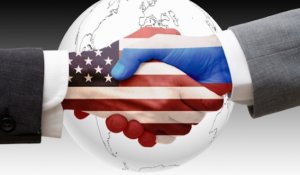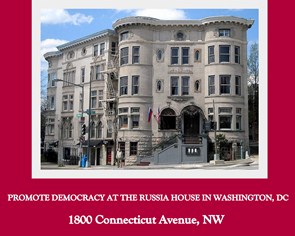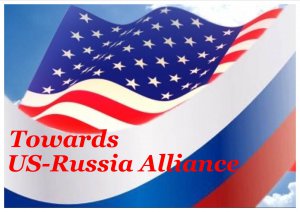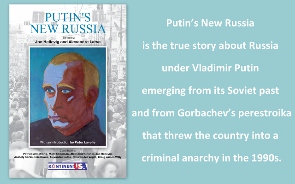
Dmitry Suslov
Programme Director of the Valdai Discussion Club; Deputy Director at the Center for Comprehensive European and International Studies, National Research University Higher School of Economics, Moscow
 It is now safe to talk about a dramatic change in US foreign policy strategy. From its attempts to universalize the so-called "liberal international order” created by Washington in the 1940s and to spread it across the world, the United States has moved to a strategy of global containment of the countries which have refused to integrate in this order, primarily, Russia and China. There are attempts to re-create, on a new level, a sort of global cold war and divide the globe into the "free world” led by the United States and the "authoritarian bloc” of Russia, China and other "outcast” countries that support them.
It is now safe to talk about a dramatic change in US foreign policy strategy. From its attempts to universalize the so-called "liberal international order” created by Washington in the 1940s and to spread it across the world, the United States has moved to a strategy of global containment of the countries which have refused to integrate in this order, primarily, Russia and China. There are attempts to re-create, on a new level, a sort of global cold war and divide the globe into the "free world” led by the United States and the "authoritarian bloc” of Russia, China and other "outcast” countries that support them.
In the US national security doctrines adopted in late 2017 – early 2018 – the National Security Strategy [1], the National Defense Strategy [2] and the Nuclear Posture Review [3] – the Trump administration proclaimed a return to the strategy of containing Russia and China as the key powers that refused to join the US-centric global order as junior members.
Two major changes have occurred in US foreign policy over the past year or so.
First is the qualitatively new level of unilateralism, self-interest and foreign economic mercantilism characterizing US foreign policy, and the simultaneous reduction in the liberal component of US foreign policy and adherence to the "liberal international order.” The United States withdrew from the TPP and the Paris Climate Agreement, and launched a NAFTA review process. It is cutting foreign aid while making it even more openly aimed at achieving short-term US foreign policy interests. Developed and rapidly developing countries, including allies of the United States, are seen not so much as partners, but as competitors.
Second is the abrupt, long-term change in how heavily weighted US foreign policy is toward Russia and China. The policy of containment (including political, military and economic elements) has been sharply escalated with respect to both countries at the expense of the policy of "engagement”.
The immediate causes of these changes vary. The first is domestic politics. There is Trump's focus on keeping the support of his base of voters, the general preference of Republicans for more unilateral and self-interested approach to foreign and foreign economic policy, and, in general, the adaptation of the United States to the emergence of a large group of people displeased with globalization.
The cause behind the second change is systemic: the challenge that Russia and China pose to American leadership, the overall evolution of the world in a manner that is unfavorable for the United States and inconsistent with its ideology and historical narrative, and the Trump administration's concurrent attempts to give US foreign policy not only an offensive thrust, but a new inner core as well.
However, they are both rooted in a recognition that the liberal international order has failed to materialize, and a real threat is looming over US economic leadership.
Russia and China are not following the Western development model. Xi Jinping's decision to remain in power for at least another term was the final blow to America’s hopes for China’s democratic transformation for the foreseeable future. Washington's hopes that economic dependence on the liberal order will make China a "responsible stakeholder” have collapsed. Beijing only partially participates in the economic order and to the extent that it benefits its internal goals.
However, while recognizing the failure of the previous strategy of spreading the American order to the entire world, the United States is not yet ready to move on to what Russia and China require of it. Namely, creating an international political and economic order in conjunction with them and other global centers as co-developers and co-organizers, and then co-governors.
First, the United States has no experience of long-term participation in international orders on an equal footing with other centers of power and, especially, the joint formation of such orders. The only models it is familiar with are isolationism, that is, non-participation in someone else’s order, and internationalism/Wilsonianism, that is, forming its own order based on its own rules, values and institutions, with the US at the center.
Second, creating an international order with Russia and China does not fit into the US conception of its history, which they see as a sequence of brilliant victories and the realization of their "manifest destiny” and "mission” to transform the rest of humanity in accordance with the American model, the "only right one”.
Third, this contradicts US ideology and its sense of exceptionalism, which preclude working to forge an international order in collaboration with anyone, especially "authoritarian” states.
Fourth, too little time has passed since the United States proclaimed ultimate historic victory, when global leadership and the US leadership seemed almost eternal, and the transformation of the rest of the world seemed inevitable.
Thus, the United States has returned to containment which is the only alternative available to it in the circumstances. It is not just Washington's recognition of the competitive nature of its relations with Moscow and Beijing, but a return to a strategy aimed at defeating them ultimately.
The Trump administration has finally dropped the idea of improving relations with Russia. By the summer of 2017, President Trump realized that Moscow would not follow in the wake of American interests and would not applaud to his attempts to "make America great again.” Since then, the policy of containing Russia has only intensified in the form of greater sanctions pressure, an expanded US military presence in Europe and increased funding for military programs to contain Russia, as well as a revised US nuclear doctrine designed to increase military pressure on Russia and to draw it into the arms race, the supply of lethal weapons to Ukraine, and the focused, increasingly open opposition to Russia in Syria, including through the use of military force. The expansion of the geography of Russia's rivalry with the United States in the post-Soviet space, such as Central Asia, cannot be ruled out.
US-China cooperation has been reduced to a minimum (primarily, the dialogue on North Korea, as well as residual interaction on the global economy and climate).
However, this new US strategy of global confrontation with Russia and China and dividing the world, as well as the reproduction of a new bipolarity, is unlikely to be successful. It contradicts systemic and internal US factors and trends. Therefore, it should be viewed as another transitional attempt by the United States to adapt to a world that is developing contrary to its ideological notions and preferences.
First, the new US strategy runs counter to the global context. Today’s objectively more diverse and pluralistic world, in which medium-sized and small states and non-state actors are playing an increasingly important role and seeking greater self-sufficiency, cannot be driven back into the Procrustean bed of bipolarity and the global cold war. The US attempts to confront the countries of Southeast Asia, the Middle East and Europe with the ultimatum of "You’re either with us, or with China and Russia” are doomed to fail and will only weaken Washington's position in these and other regions of the world.
Second, the return to the global cold war contradicts the second large-scale shift in US policy which is the rejection of liberalism, and the strengthening of economic mercantilism, self-interest and unilateralism. The beginning of the previous cold war took place amid the unique total economic hegemony of the United States, which, in 1945, accounted for up to 50 percent of global GDP, up to 60 percent of global industrial output and 70 percent of commercial ships. This is what enabled them to build a liberal economic system – first in the West and then worldwide – based on trade liberalization (GATT-WTO), the regulation of global finance (the Bretton Woods institutions) and large-scale foreign aid to its allies and partners (starting with the Marshall Plan).
Today, there is no such gap between the United States and the rest, and it will never return. Washington is consciously renouncing the role of "benevolent hegemon,” including in relation to its allies, and is unlikely to return to it in the foreseeable future, as that would be at odds both with structural factors (the distribution of power between the United States and its allies in the Asia-Pacific and Indo-Pacific region is no longer as hegemonic as it used to be), and the long-term shift in the domestic US political landscape.
Third, the strategy of global cold war and global division is at odds with the long-term trends of US domestic political development: the inevitable rotation of US elites, the emergence of a new political center in both parties and, accordingly, the development of a new foreign policy consensus.
What is the best foreign policy strategy of Russia in this context of the US transition to the policy of global cold war and the inevitable failure of this policy?
First, to not give up under any circumstances and to not make compromises on issues such as Ukraine, Syria, Russia's presence in key regions of the world and relations with the West in general, and not to disappear from the radars of international politics. The goal of Washington is to get rid of Russia as an independent global player, to return it to what the US sees as the correct path of development rather than to reach an agreement on terms that are slightly more favorable to Russia. Moreover, the image of Russia as a threat is necessary for the outgoing American elite as a way to extend its power, and will be cultivated regardless of whether this threat is real or not. The official findings by Special Counsel Robert Mueller that the activities of 13 people in a private internet company pose a great threat to US national security as well as represent an attack on democracy in the US and around the world is a good example of such an approach.
Since the fundamental transformation of US foreign policy and its rejection of the hegemonic strategy – both liberal and non-liberal – are ultimately unavoidable, Russia's goal is to survive and hold out while Washington tests different strategies for preserving its hegemony. Then, Russia should build a partnership with the US on a balanced basis and within the framework of America’s general acceptance of a polycentric international order, and its consent to build an international order together with Russia and China, and not without them or against them.
The second goal is to manage the Russia-US confrontation as it inevitably grows worse in the coming years, and to prevent uncontrolled escalation and especially a direct military confrontation. To do so, it is imperative to strengthen measures to prevent and manage crises, to improve transparency and trust as well as rules of conduct in the military sphere, and to launch a serious dialogue on international strategic stability in new conditions.
Third, there should be a concerted effort to prove that it is not possible either to divide the world between a US bloc and Russia-China bloc, or to reduce bloc-based confrontation in Europe and the chances of a bipolar split in the APR. To this end, while maintaining strategic partnership with China and forming an international political and economic community of Greater Eurasia with it, Russia should make strengthening cooperation with key US partners and allies in Asia the main imperative of its foreign policy in the next few years and, if possible, do the same in Europe. It is necessary to keep up the positive dynamics of relations with Japan and ASEAN, to prevent the deterioration of relations with India as it strengthens its partnership with the United States, and to prevent polarization of the Pacific Region as a whole in the wake of the anti-China coalition that is being formed by the United States, Japan, India and Australia as part of the Indo-Pacific concept.
The sooner the United States realizes that its approach based on global division and confrontation is not working and that even its allies and partners are maintaining a flexible relationship with Moscow, the sooner it will agree to form an international order together with Russia and China and give up trying to turn back the tide of history.
[1] https://www.whitehouse.gov/wp-content/uploads/2017/12/NSS-Final-12-18-2017-0905.pdf
[2] https://www.defense.gov/Portals/1/Documents/pubs/2018-National-Defense-Strategy-Summary.pdf


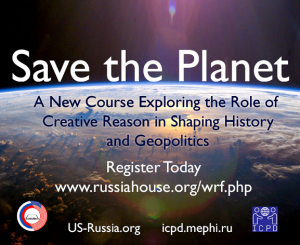
.jpg/250px-ElbeDay1945_(NARA_ww2-121).jpg)
